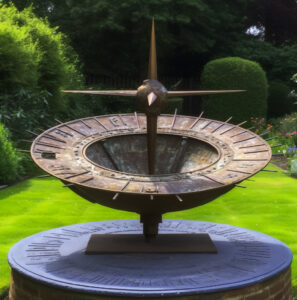 The art of timekeeping has come a long way since the earliest days of human civilization. From rudimentary devices like sundials and water clocks to the highly advanced smartwatches of today, the history of timekeeping is a story of innovation, creativity, and the human desire to measure and understand the passage of time. Join us as we embark on a captivating journey through the evolution of timekeeping devices, exploring the breakthroughs and technologies that have brought us to the present day.
The art of timekeeping has come a long way since the earliest days of human civilization. From rudimentary devices like sundials and water clocks to the highly advanced smartwatches of today, the history of timekeeping is a story of innovation, creativity, and the human desire to measure and understand the passage of time. Join us as we embark on a captivating journey through the evolution of timekeeping devices, exploring the breakthroughs and technologies that have brought us to the present day.
- Sundials: The Dawn of Timekeeping
The sundial, one of the oldest timekeeping devices known to man, dates back to ancient Egypt and Babylon. Using the movement of the sun’s shadow across a marked surface, sundials allowed people to measure the passage of time during daylight hours. - Water Clocks: Flowing with Time
Water clocks, or clepsydrae, emerged around 1500 BCE in ancient Egypt and Mesopotamia. These devices used the flow of water through a container to measure time, providing a more consistent and accurate method of timekeeping compared to sundials, especially during cloudy days or nighttime. - Hourglasses: The Sands of Time
The hourglass, which first appeared around the 14th century, used the flow of sand through a narrow passage to measure specific intervals of time. Although relatively simple in design, hourglasses became popular for their portability and reliability, even finding use in maritime navigation. - Mechanical Clocks: The Birth of Precision
The invention of the mechanical clock in the 13th century revolutionized timekeeping, as it allowed for greater accuracy and consistency. Driven by weights or springs, these clocks featured a system of gears and an escapement mechanism that regulated the movement of timekeeping components. - Pocket Watches: Time on the Go
The 16th century saw the emergence of pocket watches, which made timekeeping portable and personal. These miniature mechanical clocks, often adorned with intricate engravings and luxurious materials, became a symbol of status and sophistication. - The Wristwatch Revolution
Wristwatches gained popularity in the early 20th century, offering a more convenient and practical alternative to pocket watches. As watchmaking technology advanced, wristwatches became more accurate, reliable, and eventually incorporated additional features like calendars, chronographs, and even moon phase indicators. - The Quartz Revolution: A New Era of Timekeeping
The introduction of quartz technology in the late 1960s brought about a new era of timekeeping. Quartz watches, powered by a battery and regulated by the vibrations of a quartz crystal, offered unprecedented accuracy and affordability, transforming the watch industry and making timekeeping more accessible to the masses. - The Digital Age: From LED to LCD
The 1970s and 1980s saw the rise of digital watches, which displayed the time using LED or LCD screens instead of traditional analog dials. These watches, often packed with additional functions like alarms, stopwatches, and calculators, became popular for their futuristic designs and cutting-edge technology. - The Smartwatch Revolution
The 21st century ushered in the era of smartwatches, which combined the functionality of a traditional watch with the computing power and connectivity of a smartphone. From fitness tracking to mobile notifications, smartwatches have revolutionized the way we interact with time and technology. - The Future of Timekeeping
As technology continues to advance, the future of timekeeping remains an exciting and ever-evolving frontier. From innovative materials and designs to the integration of new technologies like artificial intelligence and augmented reality, the journey of timekeeping is far from over.
Throughout history, the evolution of timekeeping devices has been marked by remarkable ingenuity and a constant quest for precision, convenience, and innovation. From the humble beginnings of sundials and water clocks to the sophisticated smartwatches we wear today, each step in the journey of timekeeping has left an indelible mark on the way we understand and interact with time.
As we continue to push the boundaries of what is possible in the realm of horology, we can expect to see even more groundbreaking advancements and cutting-edge technologies shaping the future of timekeeping. The art and science of horology will undoubtedly continue to evolve, driven by human curiosity and our innate desire to measure, understand, and master the ever-flowing river of time.
The history of timekeeping offers a fascinating glimpse into the human spirit and our relentless pursuit of progress. As we look back at the innovations and milestones that have shaped the world of horology, we can only marvel at how far we have come – and eagerly anticipate the wonders that still lie ahead in the unfolding story of time.
